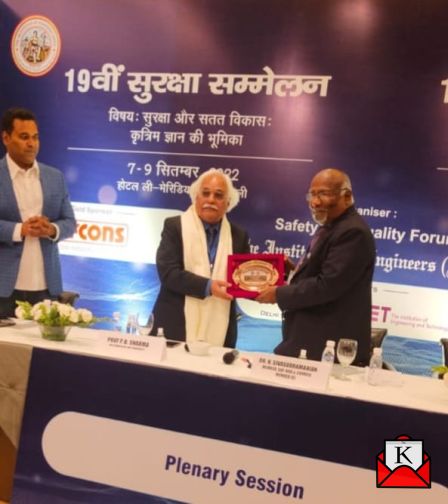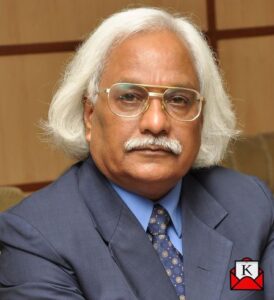Guest Blog: Mass Movement Needed To Improve India’s Road Safety


The tragic demise of Mr. Cyrus Mistry, former Chairman of the Tata Group has undoubtedly created an urgency to fasten the seat belts even while sitting on the back seats, but is that enough for a country like India that is maintaining a world record of death on roads and highways due to rash driving, over speeding and often overtaking from the left in utter breach of traffic rules and regulations? We need to go deeper into the genesis of road safety and work on war footing to make driving a safe and comfortable affair on the roads of India. While airbags and seat belts are the safety measures for the drivers and the passengers in cars and vehicles, there is no substitute for compliance with traffic laws and creating a mass awareness that it makes great sense to obey traffic rules and safety norms.
Far, it will not suffice to have the cars with airbags and seat belts, until and unless the drivers are well trained, and violation of traffic laws is made a highly heinous offense. But who trains the drivers must be the first question. In most cases, the drivers learn by themselves or with a friend who knows driving. There are no high-tech driving training institutes or training centers in India. Compared to this in advanced nations like the US, the UK, and countries of Europe, no one could get even a learning license without mandatory training on simulated driving on high-tech simulators and without passing a mandatory online examination on an understanding of traffic signs and traffic rules. This has been so for the last 25 years or so in countries from where most of the modern cars have come to India. How it is that while we have emerged as the largest market for cars and motor vehicles in the world we have neglected traffic discipline and road safety so badly that has become a world beater in terms of deaths on road due to road accidents. Almost every four minutes we are losing one life in road accidents while many more get wounded every day.
The death of Mr. Cyrus Mistry is a wakeup call for all of us to enforce self-discipline both as a driver or a passenger while on road and at the same time awaken the government and the law enforcement agencies to rise to the challenge of making driving both a pleasure and safety on roads and highways of India. The actions needed do not require any invention but actions with commitment and caring concern for our people. These are- Create a massive public campaign on TV and Social Media that following traffic rules and traffic laws is for your safety and welfare; Do not make granting of Driving License as being done at present, make it tougher than anything else as it is a license to drive safely and with a great responsibility to save yourself and also others on road; Invest in setting up on war footing High-techMotor Driving Training Institutions and Centers in great numbers around the country; Make current license holders mandatory pass the driving test in these centers and also to get their license renewed in the next six months/ one year; Improve signages along the roads and highways, Invest in Intelligent Traffic Systems and in Technology for Monitoring the offenders, and Bring heavy penalties for violation of traffic laws. Do not underestimate the lack of awareness of the traffic rules, most of our drivers do not even know how far the Zebra crossing is there. At least to obey the rule to give commuters a priority to cross. In summation, we cannot afford the luxury of holding the world record on road accident deaths anymore, now that we are an economy to be reckoned with and a nation rising to become a Viswa Guru.
While actions as proposed above are doable and do not require inventing the wheel as said above, a commuter on the roads of India is amused to find the care and craze with which the liquor shops are being opened in every nook and corner of the cities and even villages, and along the highways and expressways of our great country. Recently a large number of them have come up, with most modern showrooms, with glittering lights like that of Diwali-like décor, that is seen along the liquor shops on highways and prominent locations in the city.
This care and craze are driving the government in the states of India, including the Government of Delhi to facilitate easy access to buying liquor, even going to the extent of opening liquor shops at the entry/exit of the metro stations! Is this the sign of making of a ‘New India of our Dream’, surely not? It is not only disgusting and deserves a serious review as we cannot afford to destroy our society and the health of our people, says eminent academician Prof Pritam B Sharma who is a former professor of IIT Delhi, founder Vice Chancellor of DTU, and RGPV and Past President of Association of Indian Universities, AIU.
This is all the more important as we are in times when Nations around the world are becoming highly conscious of their responsibility towards the health and wellbeing of their people. The educated and literate community in the developed nations is moving away from the liquor and hard drinks and opting for healthy and happy living on the basis of a plant-based vegetarian diet, free from toxins and risk of catching chronic ailments including cancer. Against this backdrop, the craze for hard drinks and liquor in India is most disturbing for a nation that wants to lead the world as we move deeper into the 21st century which promises peace, harmony, and good health for people and the planet. It is utterly disgusting that while Mahatma Gandhi’s philosophy of a healthy mind needs a healthy body fed by a sattvic, a vegetarian diet is gaining momentum in western countries, and more and more Indians, including young India, are turning towards meat-based food and alcoholic drinks.
It also appears that we, in India have not taken any heed of the Corona pandemic that has brought all of us to our knees. It was greatly disturbing to note that as soon as the lockdown was lifted in a graded manner, the very first shops that were opened in January 2021 were in fact liquor shops, and the crowd was something to be seen to buy liquor that was not available during the lockdown period. While the current focus on huge revenue earnings from the sale of liquor is understood, what is beyond our understanding is undermining the impact of driving and drinking on road safety and the risk of catching deadly diseases like liver cirrhosis and kidney infections that are caused by an obsession with alcoholic liquor drinks.
According to IWSR Drinks Market Analysis Report (2021), India is the second largest consumer of spirits (whiskey, vodka, gin, rum, tequila, and liqueurs). In fact, India consumes more whiskey than any other country in the world – about three times more than the US, which is the next biggest consumer. Nearly one in every two bottles of whiskey brought around the world is now sold in India. It should, however, make us alarmed that as per WHO Report(2018), nearly 5.1% of the global burden of disease is attributable to alcohol consumption, and it causes nearly 3.3 million deaths every year. Globally, 50% of the deaths are caused by liver cirrhosis, 30% of the deaths because of oral and pharyngeal cancers, 22% of the deaths are caused by inter-personal violence, 22% of the deaths because of self-harm, 15% of the deaths caused by traffic injuries, 12% of the deaths because of tuberculosis (TB) and 12% of the deaths caused by liver cancer are attributed to alcohol consumption. The report further reveals that the harms from a given amount of drinking alcohol are higher for the alcoholic poor and their families than for richer drinkers.
It may be worth recalling that the Directive Principle of the State Policy in the Indian constitution clearly states in Article 47 that the State shall endeavor to bring about prohibition of the consumption except for medical purposes of intoxicating drinks and of drugs that are injurious to health”. It is, however, remarkable that in Mahatma’s own home state Gujrat, a complete ban on the sale of alcoholic liquor is continuing for the last over six decades, ever since 1st May 1960. Other states that have implemented alcohol prohibition laws are Nagaland (1989), Manipur (1991), Mizoram (2019), and Bihar (2016). All other States and Union Territories are getting away even after 75 years of independent India by simply putting a label “Drinking Alcohol is injurious to health” or simply writing along motorways that “Drinking and Driving do not go together”, yet allowing glittering alcoholic drink sale all along highways and roads of India.
The Best will of course be a complete ban on the manufacture and sale of alcoholic drinks such as Whisky, Vodka, and Gin. However, till such time the dependence on revenue generation from the manufacture and sale of alcohol is greatly reduced, a nation like India should implement the WHO alcohol policy based on three Best Buy solutions to prevent and reduce alcohol harm. These are proven measures that are the most affordable, feasible, and cost-effective intervention strategies for tackling the harm caused by alcohol products. The three pillars of the WHO Alcohol Policy Best Buys are: Increase excise taxes on alcoholic beverages; Enact and enforce bans or comprehensive restrictions on exposure to alcohol advertising; and Enact and enforce restrictions on the physical availability of retailed alcohol. The success stories of Lithuania (20% reduction in deaths attributable to alcohol), Scotland (20% Reduction in consumption), and Russia (12.5% decrease in alcohol consumption) illustrate the benefits of implementing WHO-recommended alcohol policy solutions. These countries are leading by example for the entire region by making broad strides in alcohol policy to uplift population health. Why should India not adopt the WHO Best Buy Policy on Alcohol and put a complete ban on sale in open public eyes along the roads and highways in glittering showrooms as at present? What prevents India from making Mahatma Gandhi more relevant to making New India our dream in which the health, well-being, and safety of our people will be as important as the nation’s economic growth?
About the author- Kulpati Prof PB Sharma is an eminent academician, Past President of Association of Indian Universities AIU, Founder Vice-Chancellor of DTU and RGPV, and a former Professor of IIT Delhi currently Vice-Chancellor of Amity University Gurugram.
